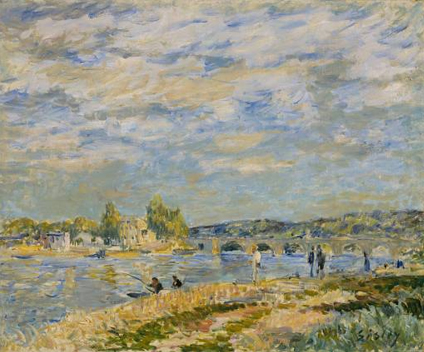PISSARRO called Sisley ''the typical Impressionist'' but this has come to seem more of a weakness than a strength. While his colleagues in the movement experimented with other styles, other subjects, Sisley remained the solid, reliable club secretary of Impressionism. His life sometimes seems to have been one long riverbank excursion, devoted to the memorialising of one transitory ''impression'' after another. Sticking to his plein-air strategies, Sisley continued to register strength of breeze, agitation of foliage and water, disposition of clouds, right to the end.
Thirty years after Sisley's death, H R Wilenski wrote an article called ''The Sisley Compromise'' in which he rested the case for the prosecution: ''Sisley was never sensational or vulgar. He kept the tones and planes in excellent relation. He had sensibility, good taste and pictorial tact. But he was not a great and original master; he was not a Monet, a Seurat, a Degas or a Renoir.'' It is hard to think of a better demonstration of how to damn someone with faint praise.
''Alfred Sisley'', at the Royal Academy, sets out to reopen the Sisley case, to prove that he was a more complicated artist than his reputation might suggest. Sisley's preference for pastoral over urban subjects, it is argued in the catalogue, gives his art ''a particular relevance for us today''. He is cast as an artist whose concerns foreshadow those of the contemporary environmentalist lobby. You could as plausibly (or implausibly) argue the case for just about every landscape painter in history but Sisley is a fascinating artist, precisely because he is the most typically Impressionist of the Impressionists. His painting demonstrates, with unusual clarity, the peculiar problems and anxieties implicit in such a reputedly carefree approach to painting.
The earliest works in the RA's exhibition show Sisley...

False impressions
14-07-1992

